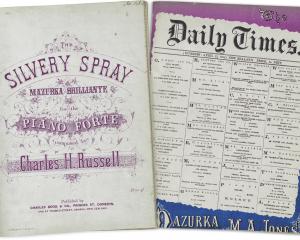
In Toitu Otago Settlers Museum’s Material Culture gallery hang a pair of portraits, presumed to be from the mid-1860s and attributed to Dunedin’s first professional portrait painter. Both the artist, John Irvine, and the sitters, James and Mary Hume, arrived in Dunedin in 1863.
On October 28, 1863 John Irvine’s son William, aged in his mid-20s, was admitted to the lunatic asylum, as it was then known, which had recently opened on the site now occupied by Otago Boys’ High School. James Hume joined him in 1864, not as a patient but as keeper of the asylum.
Hume, having spent many years working at Glasgow’s Gartnavel Asylum and the Worcester County Asylum, was an ideal man for the job. He was assisted by his wife, who acted as matron of the Dunedin Asylum until her death in 1867.

Unfortunately William Irvine’s psychiatric disorder was deemed incurable and paying for the extended maintenance of their son must have been taxing on the Irvines. In 1869 William’s bank account was passed to the authorities and an order was issued for his property to be sold to pay for his past and future upkeep. Perhaps the paintings had been a way of contributing to William’s maintenance too. When John Irvine died in 1888 his will provided for an annual payment of £40 towards William’s ongoing care.
William Irvine passed away at Seacliff Asylum in 1890. By that time James Hume was no longer working as keeper of the public asylum. In 1882 he had been replaced by a qualified doctor and instead had co-founded a private asylum, Ashburn Hall. James Hume died at Ashburn Hall in 1896.
The two portraits, along with another Irvine-attributed painting showing Park House where the Humes lived, were presented to the museum by Mary, the youngest of James Hume’s daughters, in 1932.
- Peter Read is a curator at Toitu Otago Settlers Museum.


![‘‘Neil’s Dandelion Coffee’’. [1910s-1930s?]. EPH-0179-HD-A/167, EPHEMERA COLLECTION, HOCKEN...](https://www.odt.co.nz/sites/default/files/styles/odt_landscape_small_related_stories/public/slideshow/node-3436487/2025/09/neils_dandelion_coffee.jpg?itok=fL42xLQ3)








